The more people become dependent on “smart” technology and the latest benefits of civilization, the more they are drawn to nature – to fields, forests. It’s no wonder that minimalism and ecology have gained such popularity nowadays – these are the trends of modern landscape design.
The landscape eco-style (or naturgarden) is not only trendy, but also beneficial. It is suitable for almost any relief, without requiring the leveling of the terrain or clearing it of stumps, boulders, and snags. And if there is, for example, a ravine or a swamp on the site, eco-style can literally save it without requiring significant resources and efforts.
The more natural the environment, the friendlier it is to humans. The more energy and vitality we can draw from being in such a pristine environment.
The philosophy of the eco style lies in this very idea. And the main task for the owner of the site who wants to embody it is to create not just a garden, but a complete, harmonious ecosystem.
Eco-garden: planning and zoning
Before starting the layout of your eco-garden, make sure that you are on the right track, that the eco-idea fits the exterior of your home, your lifestyle, and your worldview. A cottage built using modern materials such as smooth concrete, ceramic granite, with plenty of glass and metal, may not be a harmonious combination with a natural garden. The construction should be simple, made of wood or stone. If the facade is brick or clad in siding, it can be covered with vertical greenery. This technique will not only divert attention from the “unnaturalness” of the walls but also unite the house and garden into a single style.
If you need to create a terrace, we recommend using a dry stone retaining wall. The gaps between the stones can be filled with soil and seeded with grass. Combined with ivy, wild grape, cotoneaster, and thyme, such structures will not look out of place.
The second important step is to identify the soil type and analyze the terrain and vegetation characteristic of the area. After all, all of this must be taken into account when selecting trees, shrubs, and herbs.
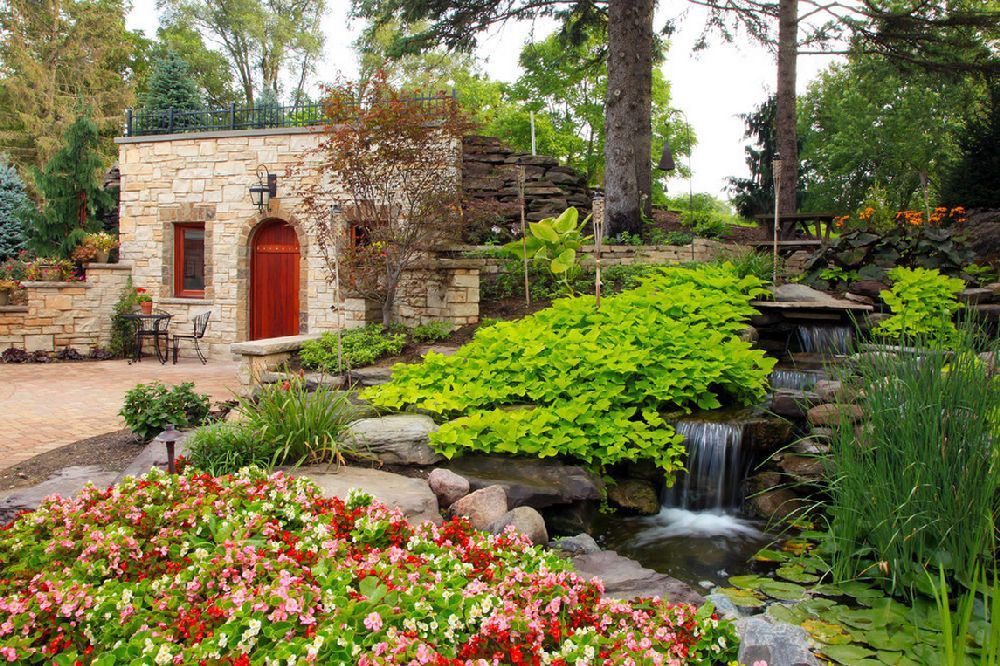
Before starting the layout of your plot, make sure that you are on the right track, that the eco-idea suits the exterior of your house, your lifestyle, and your worldview. A cottage built using modern materials such as smooth concrete, ceramic granite, glass, and metal may not create a harmonious tandem with a natural garden plot. The construction should be concise, made of wood or stone. If the facade is brick or covered with siding, it should be covered with vertical greenery. This technique, first of all, will divert attention from the “unnaturalness” of the walls and, secondly, will unite the house and the garden into a single style.
If you need to create a terrace, we recommend using a dry stone retaining wall. The gaps between the stones can be filled with soil and seeded with grass. Combined with ivy, wild grapes, rockroses, thyme, such structures will not look alien.
The second important step is to determine the soil type, analyze the relief and vegetation typical of the area. After all, all this will have to be taken into account when selecting trees, shrubs, and herbs.
An important rule of eco-design in the garden is the minimal (ideally reduced to zero) number of fences and enclosures. Zoning of the plot should be smooth and inconspicuous. Look to nature for inspiration: forests or valleys do not end abruptly but gradually merge into another landscape. The same should be on your plot. Separate zones from each other with tall trees, a couple of bushes, or a natural hill. Avoid straight lines and symmetrical shapes that are not typical of living nature.
What if you need a fence? Try forming a living wall from bushes of different heights and textures. Combine, for example, lilac, yew, viburnum, jasmine, cotoneaster, elderberry, and similar plants. You can choose plants that bloom at the same time, creating a stunning but short-lived effect, or those that bloom at different times.
As you can see, there are no strict rules for planning an ecological garden; instead, intuition and sensitivity to the hints of nature should guide you.
Lawns
You should opt for a Mauritian lawn when creating an eco-plot, as it forms a varied meadow-like appearance. Preparing the soil for this type of lawn is straightforward: you only need to clear out the weeds. The maintenance of a Mauritian lawn is also simple, just requiring occasional mowing of the vegetation and watering during dry weather. The Mauritian grass mixture includes field, meadow, and steppe flowers, both annuals and perennials, which vary in height.
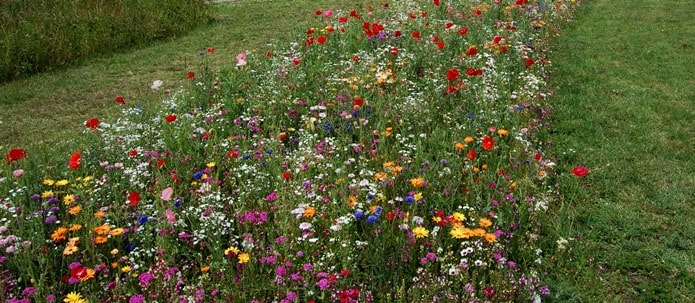
However, it is not necessary to cover the entire garden with a Mauritanian mix. It is highly desirable to preserve the vegetation that is characteristic of the area, while adding to the existing grass cover. This is the most optimal way to green an eco-plot.
Don’t overlook perennial grasses: unlike meadow and field flowers, decorative grasses remain attractive in autumn and even winter.
Field flowers can and should be combined with bulbous, simple, non-selective wildflowers such as native bluebells, indigenous irises, and daylilies. But they should grow in natural strips or islands.
If there are many rocks on the plot, plant mountain flowers and grasses around them: this will give the garden a natural, but slightly unusual alpine atmosphere.
Trees and shrubs
All trees growing on your plot should remain intact. Do not replace one species with another. If these trees appeared here, it means that the environment is favorable for them, which guarantees the health of the entire garden.
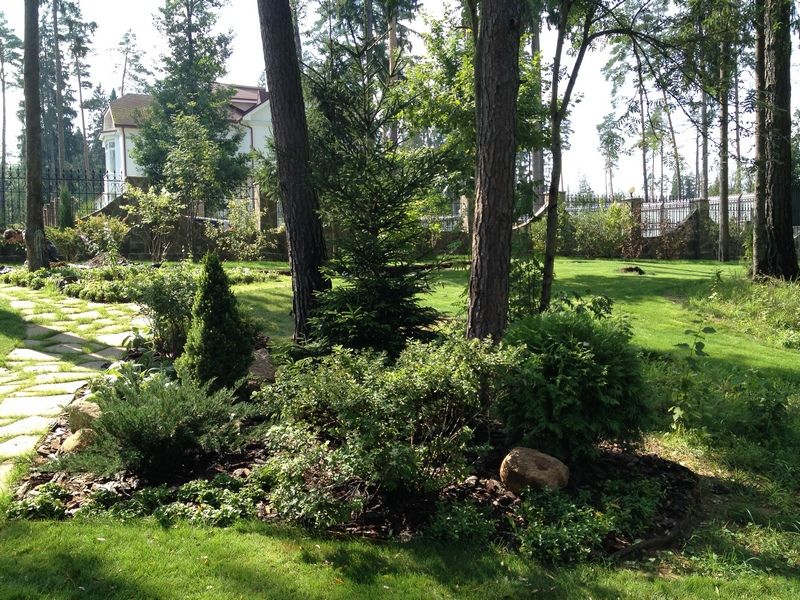
You can add wild forest varieties and shrubs to the existing plants, but exotic species are not allowed – the flora should correspond to the area. Suitable options include maple, chestnut, birch, alder, willow, bird cherry, mountain ash, pine, and from shrubs – chokeberry, lilac, barberry, viburnum, and wild currant. In areas with marshy soil and on the banks of water bodies, you can cultivate reeds, cattails, and other water-loving plants.
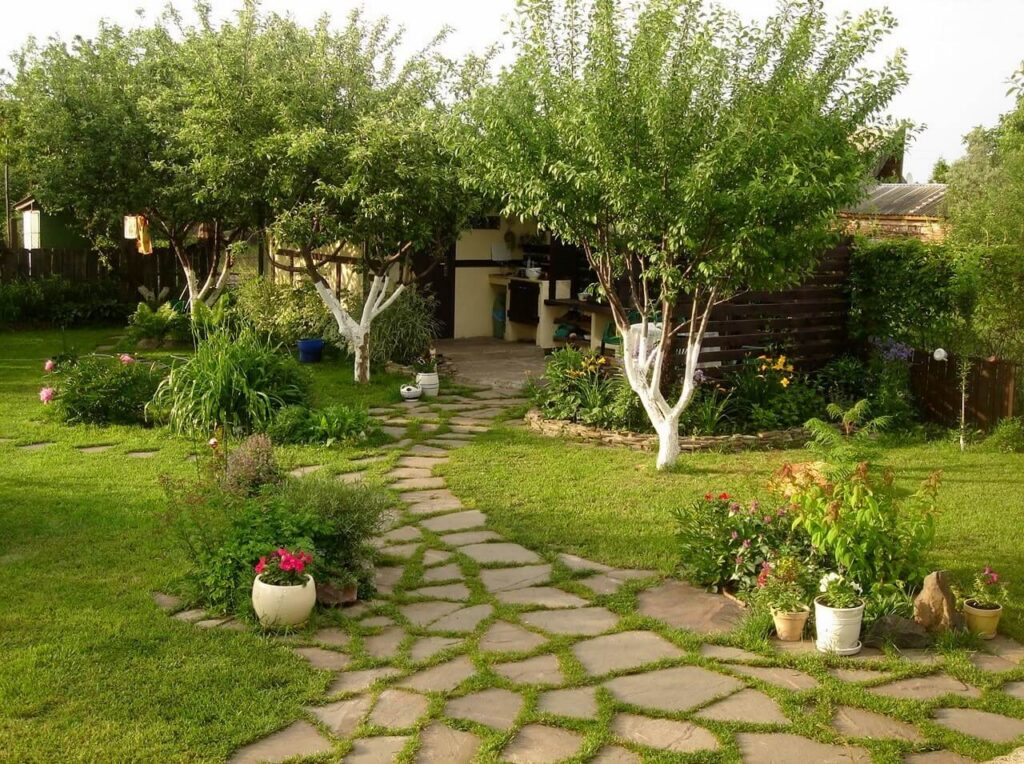
Successful compositions
The best flower bed in an eco-garden is a mixture of decorative grasses, herbs, and simple forget-me-nots.
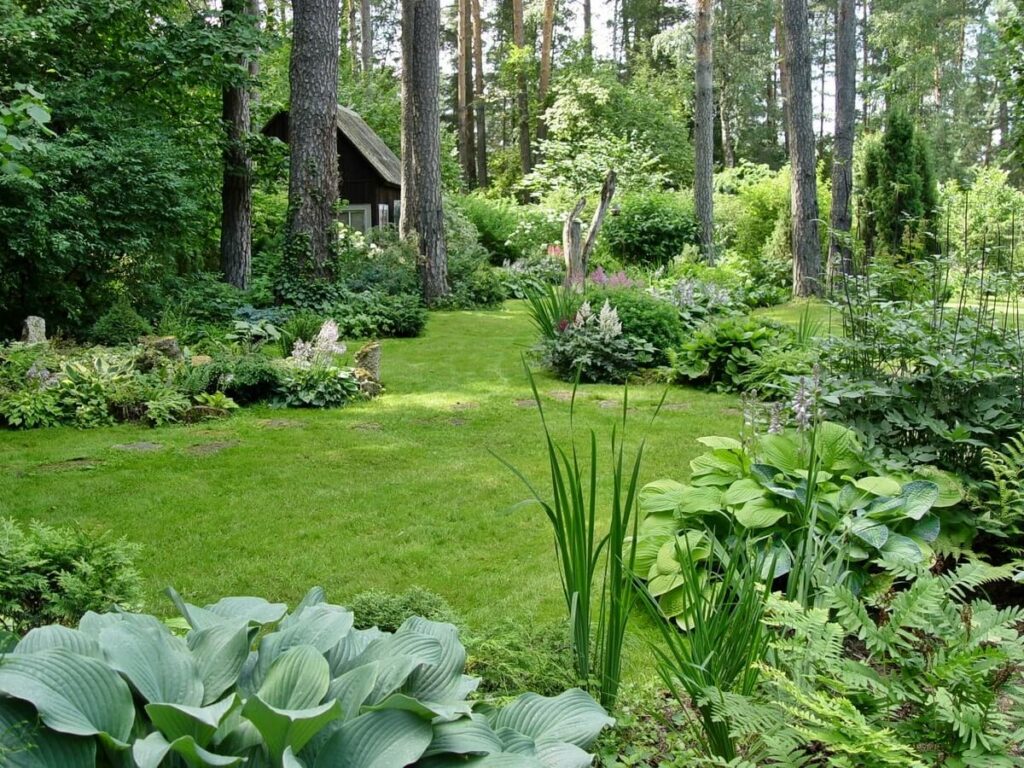
Pathways and small forms
It is possible to do without paving altogether – it will be enough to mow the paths. But if this is not enough, it is permissible to lay paths with broken stones, leaving gaps between them, wooden logs, or sprinkle with pebbles. The essential conditions are no curbs, painted gravel, or meticulously sifted sand, no straight lines.
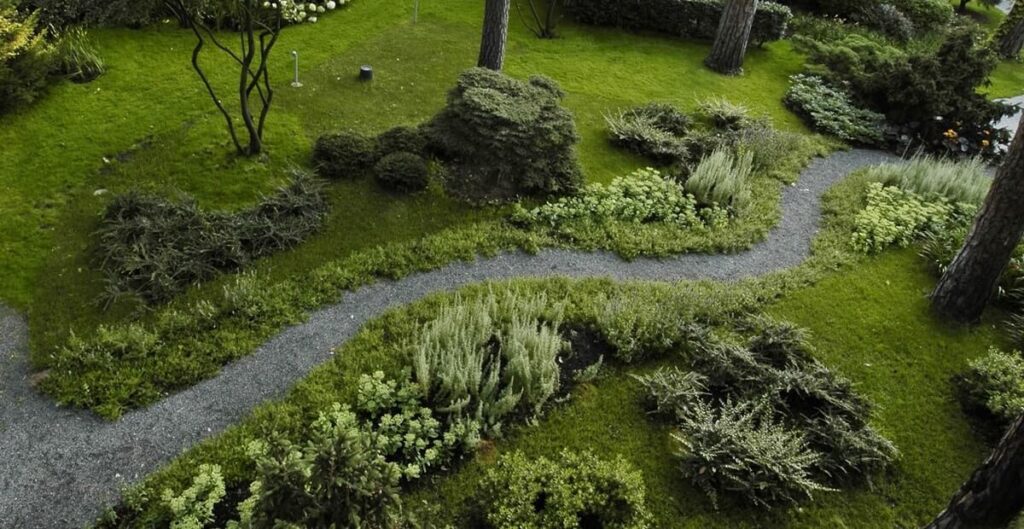
Give the barbecue area the appearance of a campsite – surround the fire pit with rough stones and hang a pot on a tripod.
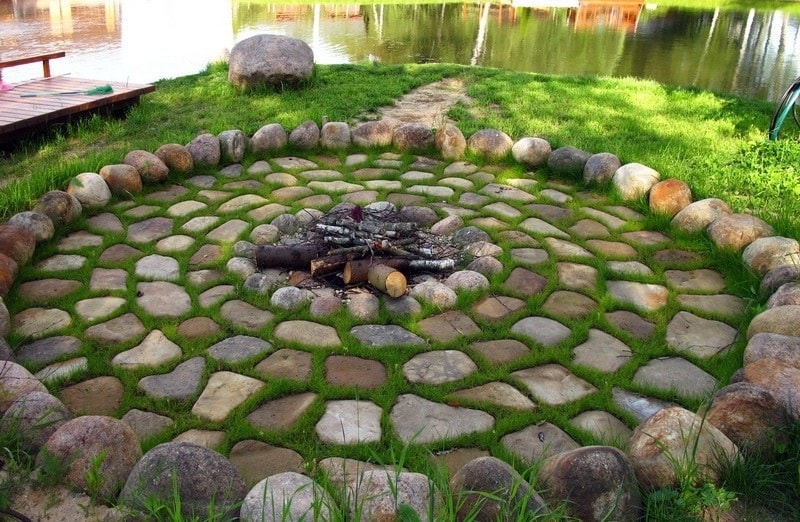
However, the examples mentioned do not mean that garden furniture should not be comfortable; the point is that all accessories must correspond to the natural style and not stand out from the surrounding picture. Minimally processed wood, wicker, and stones are the best materials for producing eco-friendly furniture.

As for gazebos, benches, and barbecue areas, on the one hand, all of these items do not grow in the forest or field and cannot be considered part of ecology. On the other hand, without such objects, the plot becomes just a fragment of nature, losing its share of comfort and functionality.Opt for simple structures made of unpainted wood and untreated stone as a compromise. You can replace a gazebo with a straightforward canopy made of canvas draped over logs and stumps. And rather than a barbecue, you can use a fire pit situated in a remote corner of the garden.
Decor and lighting
Nature is self-sufficient and, in principle, does not need decoration. However, without original, decorative details, an eco-plot will be too trivial and even a little dull.
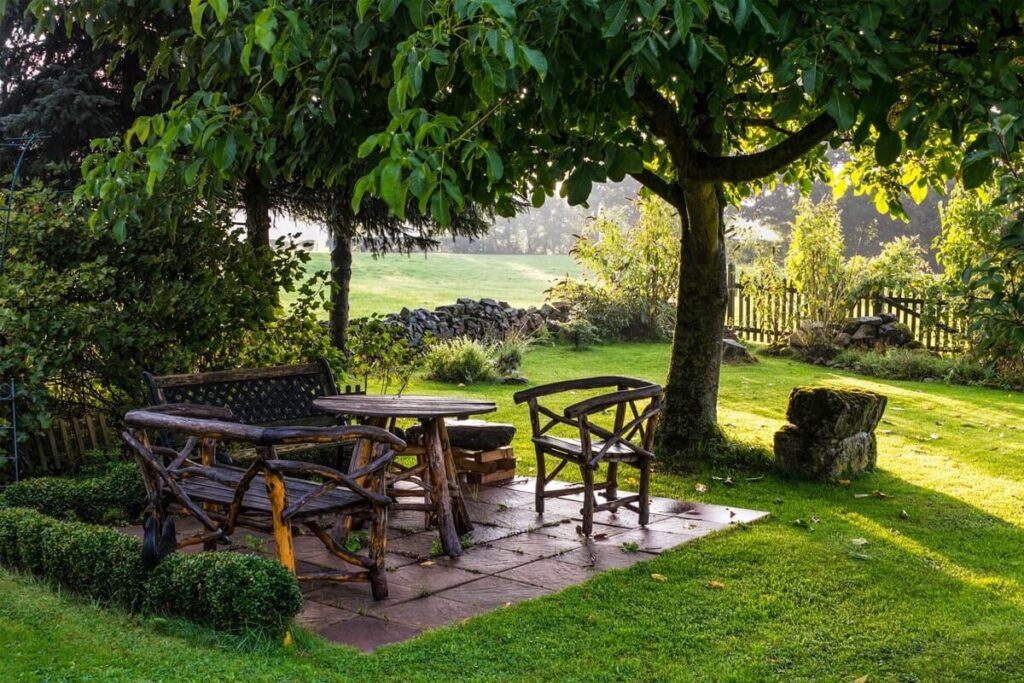
A “field” landscape can be decorated with a hay bale or a small stack of hay on the periphery of the plot. It is desirable to hang lights on branches, placing them in glass jars or bottles. Ideally, the lamps should imitate live fire.
Many confuse eco-design with a rustic garden landscape. These styles do have a lot in common, but eco-design is characterized by much more originality and natural freedom. Look for ideas for decorating an eco-garden primarily in nature.
Wildlife
The ecosystem will take care of itself if you attract birds, squirrels, bees, beetles, hedgehogs, snakes, and to the water body – newts, turtles, and frogs to the plot. Feeders and drinkers, simple homemade shelters for birds, insects, and amphibians will also become a decoration for the garden. For example, for frogs, several large clay jugs can be placed near the water body, and for hedgehogs (and a quarter of these useful animals do not survive the winter), houses-burrows can be made of twigs, bark, and straw. Wildlife that feels comfortable is perhaps the main decoration of an eco-style garden.
Color palette
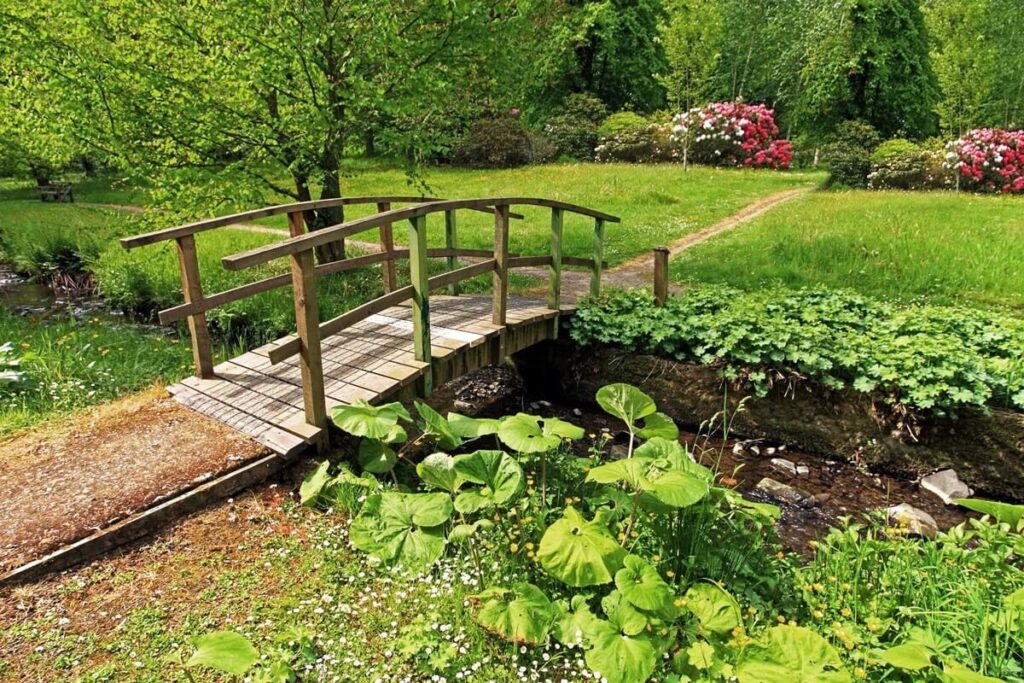
A natural garden rejects vibrant, bright colors, flashy and juicy contrasts – things that usually don’t exist in nature unless you live in the tropics or the jungle. The color palette of a natural plot is light and natural. In addition to green, white, yellow, pale pink, blue, and purple, silver tones, as well as shades of wood and stone, clay, and sand, predominate.
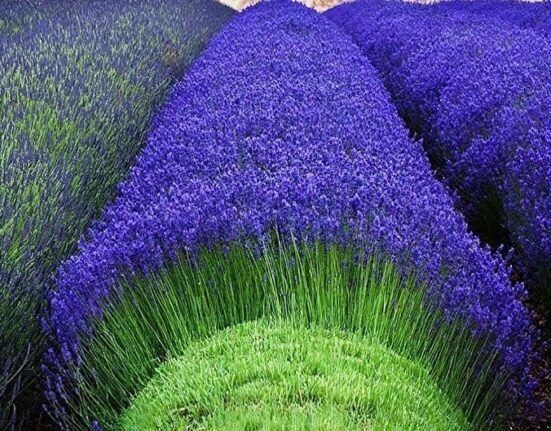

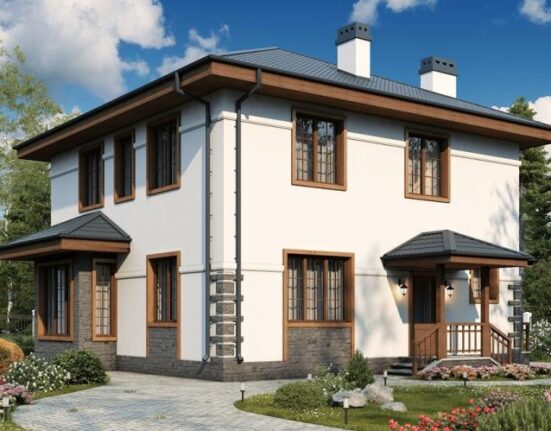

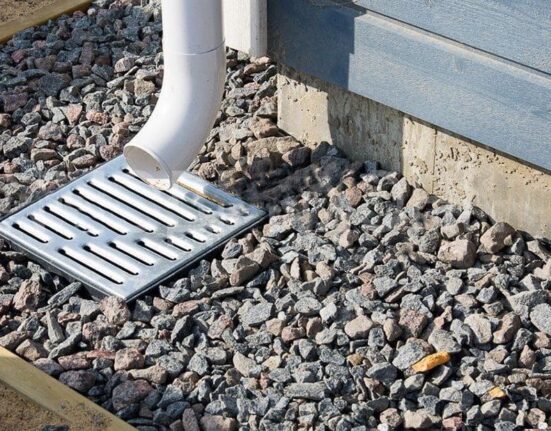
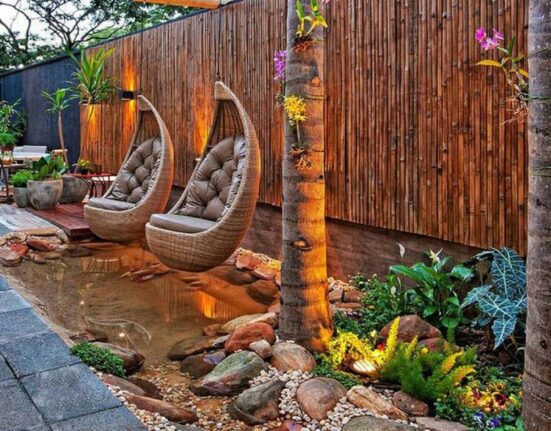
Leave feedback about this